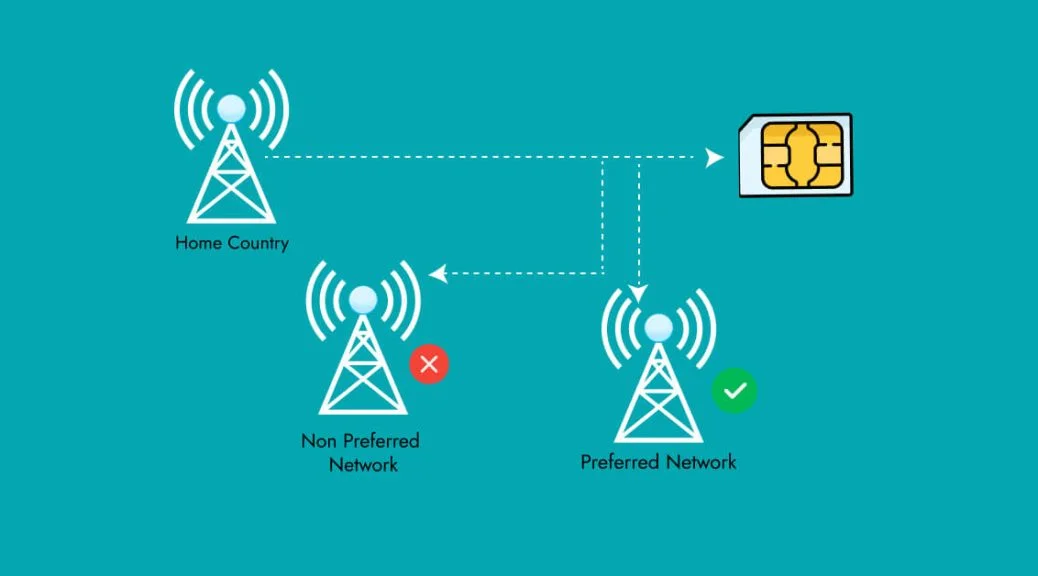Introduction
Roaming Steering: In the fast-paced digital world, seamless mobile connectivity is essential for consumers and businesses. With the increasing need to stay connected across borders, efficient management of mobile networks is crucial. Roaming steering plays a pivotal role in enhancing user experience by ensuring that mobile devices connect to the most optimal network while roaming internationally. This article provides an in-depth understanding of roaming steering, its working mechanism, benefits, challenges, and its impact on mobile operators and consumers.
What is Roaming Steering?
Roaming is a process used by mobile network operators (MNOs) to direct or “steer” roaming subscribers to preferred partner networks when they travel outside their home country. This process ensures that users connect to the most cost-effective and high-quality network while abroad. Roaming is vital for managing roaming agreements and optimizing operational costs for mobile operators.
When a subscriber enters a foreign region, their mobile device searches for available networks. Roaming steering technology evaluates these networks based on several factors such as cost, quality of service (QoS), and contractual agreements. The subscriber is then automatically connected to the preferred network, ensuring an uninterrupted and high-quality user experience.
How Does Roaming Steering Work?
Roaming involves multiple steps and advanced algorithms to ensure efficient network selection. Here is a breakdown of how it functions:
- Network Scanning: When a roaming subscriber enters a new country, their device scans for all available networks.
- Network Evaluation: The steering system evaluates these networks based on predefined criteria, including cost agreements, signal strength, and service quality.
- Network Prioritization: Based on the evaluation, the system prioritizes networks according to the MNO’s business preferences.
- Automatic Network Selection: The system automatically directs the subscriber’s device to connect to the best available network.
- Continuous Monitoring: Roaming continuously monitors network performance to maintain optimal connectivity and can switch networks if necessary.
Types of Roaming Steering Methods
Roaming steering is achieved through two primary methods:
- SIM-Based Steering: This method utilizes instructions embedded in the SIM card to prioritize and select preferred networks. The SIM card contains a list of preferred networks and guidelines that guide the device in choosing the optimal network. This approach is effective but limited to the capabilities of the SIM.
- Network-Based Steering: This method relies on the core network infrastructure to direct subscribers to preferred networks. It uses signaling protocols and real-time data analysis to manage network selection dynamically. Network-based steering is more flexible and provides better control over the roaming process.
Advantages of Roaming Steering
Roaming steering offers numerous benefits for both mobile operators and end-users. Key advantages include:
- Cost Optimization: By directing subscribers to partner networks with favorable agreements, MNOs can reduce wholesale roaming costs.
- Improved Service Quality: Steering ensures users connect to networks with better signal strength and service quality, enhancing their overall experience.
- Enhanced Control: MNOs have greater control over where their subscribers connect, ensuring compliance with business objectives and regulatory requirements.
- Revenue Generation: Through strategic partnerships, operators can negotiate better deals and increase revenue from inbound and outbound roaming.
- Customer Satisfaction: Ensuring consistent, high-quality service reduces customer complaints and increases user satisfaction.
Challenges in Implementing Roaming Steering
While roaming steering offers significant benefits, it also presents several challenges:
- Complexity of Implementation: Implementing an effective roaming steering system requires sophisticated technology and infrastructure investment.
- Subscriber Experience: Aggressive steering can disrupt user experience if not managed carefully, leading to dropped connections or service interruptions.
- Regulatory Compliance: Different countries have varying regulations on network selection, requiring operators to adapt their strategies accordingly.
- Technical Limitations: Legacy systems may lack the capacity to implement advanced steering techniques, necessitating upgrades.
- Competitive Landscape: With multiple MNOs vying for roaming traffic, maintaining competitive agreements while optimizing steering can be challenging.
Technological Innovations in Roaming Steering
Advancements in technology have transformed the landscape of roaming steering. Key innovations include:
- Artificial Intelligence (AI) and Machine Learning: AI-driven algorithms analyze vast datasets to optimize network selection in real-time, improving accuracy and efficiency.
- eSIM Technology: Embedded SIMs enable remote network provisioning, allowing dynamic and flexible roaming steering without physical SIM changes.
- 5G Networks: The deployment of 5G enhances steering capabilities with higher data speeds, lower latency, and improved connectivity.
- Big Data Analytics: Large-scale data analysis helps identify trends, predict network performance, and optimize steering strategies.
Impact of Roaming Steering on Mobile Operators
For mobile operators, roaming steering is a strategic tool that impacts several business aspects:
- Operational Efficiency: Automated steering reduces manual intervention, improving operational efficiency.
- Cost Management: By selecting cost-effective networks, operators can minimize expenses while ensuring quality service.
- Market Competitiveness: Effective steering allows operators to offer competitive roaming packages and attract more subscribers.
- Partner Relationships: Steering supports strategic collaborations and revenue-sharing agreements with partner networks.
Impact of Roaming Steering on Consumers
Consumers benefit from roaming steering in various ways, including:
- Seamless Connectivity: Users enjoy uninterrupted mobile services while traveling internationally.
- Cost Savings: Steering reduces roaming charges, enabling consumers to access affordable services.
- Enhanced User Experience: Optimal network selection ensures better call quality, faster data speeds, and minimal service disruptions.
- Transparency: Consumers can be informed about network choices and potential charges through clear communication from their providers.
Future Trends in Roaming Steering
The future of roaming steering is shaped by emerging technologies and evolving consumer demands. Key trends to watch include:
- Integration with IoT: As the Internet of Things (IoT) expands, roaming steering will play a critical role in maintaining global device connectivity.
- AI-Driven Optimization: Continued advancements in AI will enhance predictive analytics, enabling even smarter steering decisions.
- Enhanced Security: With growing cybersecurity concerns, steering systems will adopt stronger encryption and authentication mechanisms.
- Global Roaming Standards: Industry-wide initiatives will drive the development of unified standards for seamless cross-border connectivity.
- Customized User Experiences: Operators will use steering data to offer personalized roaming plans tailored to individual travel patterns.
Conclusion
Roaming steering is an essential technology for optimizing mobile network connectivity across borders. It benefits mobile operators by reducing costs and enhancing control while ensuring that consumers enjoy seamless and high-quality service. As technology continues to evolve, innovations in AI, IoT, and 5G will further refine and enhance roaming steering capabilities. By embracing these advancements, mobile operators can stay competitive and deliver superior experiences to their global subscribers.





